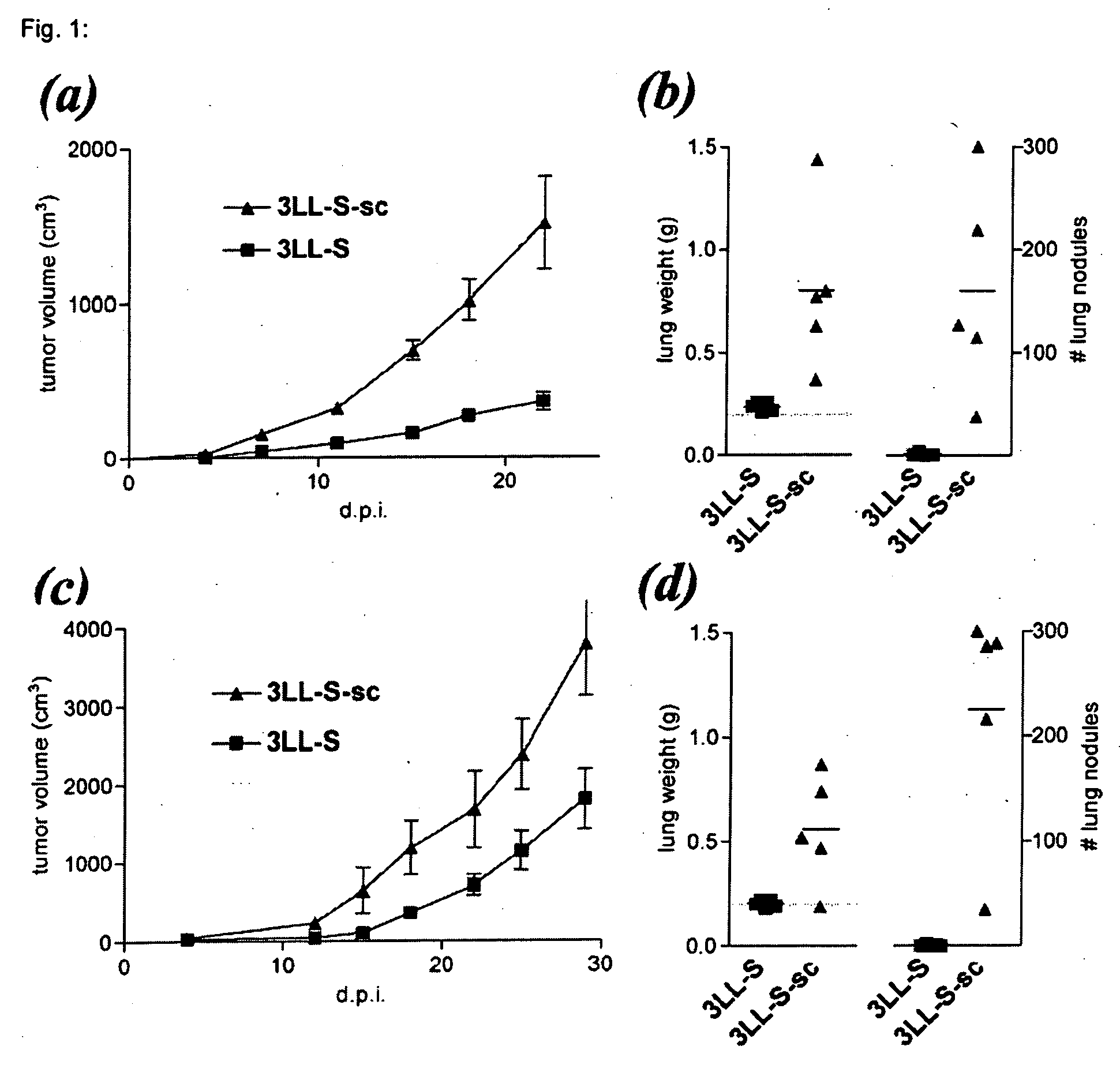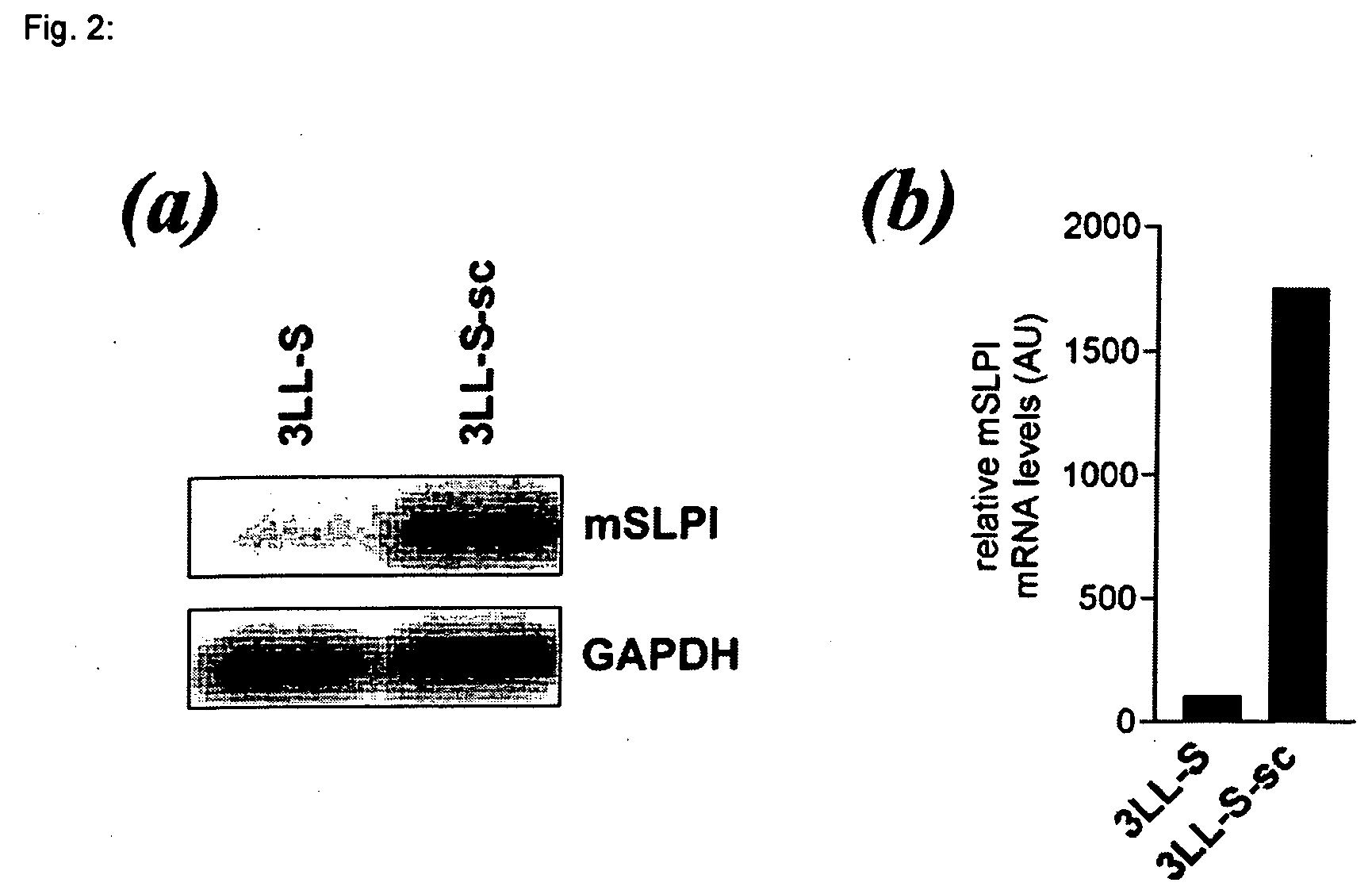Use of a polypeptide domain to modulate the tumorigenic and metastatic potential of cancer cells
- Summary
- Abstract
- Description
- Claims
- Application Information
AI Technical Summary
Problems solved by technology
Method used
Image
Examples
example 1
Subcutaneous Growth of 3LL-S Cells Enhances Their Malignancy
[0032] The 3LL-S cell line is a low-malignant subclone derived from the parental Lewis Lung Carcinoma (29). The low-malignancy of these cells is reflected by their low tumorigenicity upon s.c. inoculation (FIGS. 1aand 1c) and low lung-colonizing potential after i.v. injection (FIGS. 1b and 1d), in both syngeneic C57B1 / 6 (FIGS. 1a and 1b) and immunodeficient SCID mice (FIGS. 1c and 1d). Upon s.c. growth in syngeneic C57B1 / 6 mice, 3LL-S cells become more malignant. Indeed, as compared to the parental 3LL-S cells, cancer cells derived from s.c. 3LL-S tumors (hereafter referred to as 3LL-S-sc cells) grow significantly faster in the flank of mice (FIGS. 1a and 1c). In addition, 3LL-S-sc cells colonize the lung more extensively than 3LL-S cells after i.v. injection (FIGS. 1b and 1d). These data show that 3LL-S-sc cells are significantly more malignant than 3LL-S cells, as manifested by their increased capacity to grow at a local...
example 2
Mouse SLPI Expression is Upregulated During s.c. Growth of 3LL-S Cells
[0033] In order to identify genes whose expression is modulated during s.c. growth of 3LL-S cells, the SSH approach was adopted. This approach led to the identification of a 480-bp cDNA fragment corresponding to the 3′ fragment of the mouse SLPI (mSLPI) mRNA (13).
[0034] The upregulation of mSLPI expression upon s.c. growth of 3LL-S cells was further validated by northern blot. These northern blot experiments (FIG. 2a) and subsequent normalization with the house-keeping gene GAPDH, revealed that the mSLPI mRNA level was about 15-fold higher in 3LL-S-sc cells as compared to 3LL-S cells (FIG. 2b).
example 3
Mouse SLPI Overexpression Enhances the Malignancy of 3LL-S Cells
[0035] The above experiments revealed a direct correlation between mSLPI expression levels and the malignant behavior of 3LL-S and 3LL-S-sc cells. We next investigated whether elevated levels of mSLPI expression enhanced the tumorigenicity and / or lung-colonizing potential of 3LL-S cells. To this end, 3LL-S cells were transfected with a plasmid expressing mSLPI. As negative control-transfectant, the empty plasmid was introduced into 3LL-S cells. The stable mSLPI-transfectant mD7, in which the mSLPI mRNA level was about 7-fold higher than that in 3LL-S cells, was selected for further analysis (FIG. 3a). The control transfectant clone NA1, with mSLPI mRNA levels similar to that of 3LL-S, was used as negative control.
[0036] The role of mSLPI in increasing malignancy of 3LL-S cells was tested by measuring the tumorigenicity and lung-colonizing potential of the mSLPI overexpressing clone mD7 and the control mock-transfectan...
PUM
 Login to view more
Login to view more Abstract
Description
Claims
Application Information
 Login to view more
Login to view more - R&D Engineer
- R&D Manager
- IP Professional
- Industry Leading Data Capabilities
- Powerful AI technology
- Patent DNA Extraction
Browse by: Latest US Patents, China's latest patents, Technical Efficacy Thesaurus, Application Domain, Technology Topic.
© 2024 PatSnap. All rights reserved.Legal|Privacy policy|Modern Slavery Act Transparency Statement|Sitemap



